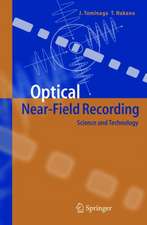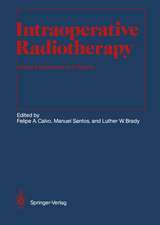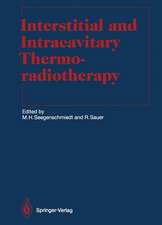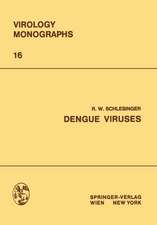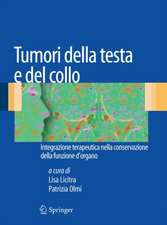Brachytherapy: Techniques and Evidences
Editat de Yasuo Yoshioka, Jun Itami, Masahiko Oguchi, Takashi Nakanoen Limba Engleză Paperback – 11 feb 2019
| Toate formatele și edițiile | Preț | Express |
|---|---|---|
| Paperback (1) | 660.71 lei 38-44 zile | |
| Springer Nature Singapore – 11 feb 2019 | 660.71 lei 38-44 zile | |
| Hardback (1) | 915.46 lei 38-44 zile | |
| Springer Nature Singapore – 20 aug 2018 | 915.46 lei 38-44 zile |
Preț: 660.71 lei
Preț vechi: 695.49 lei
-5% Nou
Puncte Express: 991
Preț estimativ în valută:
126.44€ • 137.30$ • 106.21£
126.44€ • 137.30$ • 106.21£
Carte tipărită la comandă
Livrare economică 18-24 aprilie
Preluare comenzi: 021 569.72.76
Specificații
ISBN-13: 9789811344305
ISBN-10: 9811344302
Pagini: 304
Ilustrații: X, 304 p. 88 illus., 72 illus. in color.
Dimensiuni: 155 x 235 x 17 mm
Greutate: 0.57 kg
Ediția:Softcover reprint of the original 1st ed. 2019
Editura: Springer Nature Singapore
Colecția Springer
Locul publicării:Singapore, Singapore
ISBN-10: 9811344302
Pagini: 304
Ilustrații: X, 304 p. 88 illus., 72 illus. in color.
Dimensiuni: 155 x 235 x 17 mm
Greutate: 0.57 kg
Ediția:Softcover reprint of the original 1st ed. 2019
Editura: Springer Nature Singapore
Colecția Springer
Locul publicării:Singapore, Singapore
Cuprins
Part I. General.- 1. History of Japanese brachytherapy.- 2. Japanese brachytherapy in the world.- 3. Deformable image registration in brachytherapy: Beyond dose volume histogram.- Part II. Gynecology.- 4. Moving on from LDR to HDR.- 5. Intracavitary brachytherapy from 2D to 3D.- 6. Midline block (Central shield) .- 7. Hybrid brachytherapy.- 8. Interstitial brachytherapy: radical and salvage.- 9. Asian cooperation and global trend. - Part III. Prostate.- 10. Prostate brachytherapy: the fact and the way to go.-
11. How we led Japanese low-dose-rate brachytherapy to successful practice (Urologist perspecitive).- 12. How we led Japanese low-dose-rate brachytherapy to successful practice (Radiation oncologist perspecitive).- 13. HDR monotherapy.- 14. Single-fraction boost HDR.- Part IV. Breast.- 15. Japanese experience and American trend.- 16. Hungarian experience and European trend.- Part V. Head and Neck.- 17. Low-dose-rate brachytherapy for oral cancer.- 18. High-dose-rate brachytherapy for oral cancer.- 19. Eye plaque brachytherapy for retinoblastoma and melanoma.- Part VI. Intraluminal.- 20. Intraluminal brachytherapy for endobronchial cancer.- 21. Intraluminal brachytherapy for esophageal cancer.- 22. Intraluminal brachytherapy for biliary tract cancer.
11. How we led Japanese low-dose-rate brachytherapy to successful practice (Urologist perspecitive).- 12. How we led Japanese low-dose-rate brachytherapy to successful practice (Radiation oncologist perspecitive).- 13. HDR monotherapy.- 14. Single-fraction boost HDR.- Part IV. Breast.- 15. Japanese experience and American trend.- 16. Hungarian experience and European trend.- Part V. Head and Neck.- 17. Low-dose-rate brachytherapy for oral cancer.- 18. High-dose-rate brachytherapy for oral cancer.- 19. Eye plaque brachytherapy for retinoblastoma and melanoma.- Part VI. Intraluminal.- 20. Intraluminal brachytherapy for endobronchial cancer.- 21. Intraluminal brachytherapy for esophageal cancer.- 22. Intraluminal brachytherapy for biliary tract cancer.
Recenzii
“It is an informative, easy to follow and very well-written text. … It would be a very interesting read for radiation oncologists and radiotherapy physicists interested in brachytherapy.” (Wojciech Polak, RAD Magazine, September, 2019)
Notă biografică
Yasuo Yoshioka,
Radiation Oncology Department,
The Cancer Institute Hospital of JFCR
Jun Itami,
Department of Radiation Oncology,
National Cancer Center Hospital
Masahiko Oguchi,
Radiation Oncology Department,
The Cancer Institute Hospital of JFCR
Takashi Nakano,
Department of Radiation Oncology,
Gunma University
Radiation Oncology Department,
The Cancer Institute Hospital of JFCR
Jun Itami,
Department of Radiation Oncology,
National Cancer Center Hospital
Masahiko Oguchi,
Radiation Oncology Department,
The Cancer Institute Hospital of JFCR
Takashi Nakano,
Department of Radiation Oncology,
Gunma University
Textul de pe ultima copertă
This book provides a comprehensive and up-to-date overview of major technical advances and research findings in the field of brachytherapy. Especially research conducted on brachytherapy in Japan has made tremendous strides, offering readers valuable insights into new treatment outcomes, evidence and techniques. In the respective chapters, each author elucidates cutting-edge findings, addressing both the basic and clinical aspects including the application to various cancers, and especially focusing on highly valuable data gleaned in Japan. As such, the book will benefit not only radiation oncologists but also basic researchers, radiation technologists, medical physicists and members of medical staff who are involved in the development and utilization of this advanced therapy.
Caracteristici
Enriches our understanding of brachytherapy in terms of both basic and clinical aspects Provides highly valuable data on brachytherapy from Japan Sheds light on new approaches to brachytherapy






